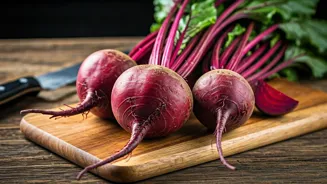Poha's Mindful Magic
Tamannaah Bhatia's transformation isn't about harsh restrictions; it's about smart choices. Her focus on mindful eating highlights the importance of selecting
nutritious, satisfying foods. Poha, a common breakfast item, fits this bill perfectly. Mindful eating involves paying close attention to what you consume, its impact on your body, and how it makes you feel. Instead of counting calories obsessively, mindful eaters focus on enjoying their food while ensuring it nourishes them. Poha, with its light texture and readily available ingredients, becomes an ideal component for a breakfast that is both delicious and health-conscious. By selecting poha, Tamannaah made a conscious decision to support her fitness goals with a balanced and tasty meal, which enabled weight management and contributed to her overall well-being.
Why Choose Poha?
Poha is more than just a simple dish; it's a powerhouse of benefits, especially when it comes to health and weight management. Firstly, poha is a great source of carbohydrates, which are necessary for energy, making it an excellent breakfast choice to kickstart your day. The dish is also relatively low in calories, which is perfect for anyone trying to manage their weight. Poha is easily digestible and doesn't weigh you down, unlike heavier, oilier breakfast options. The dish also keeps you feeling full for a longer time, due to its fiber content. This helps control cravings and reduces the likelihood of overeating. Moreover, poha is often seasoned with vegetables such as onions, peas, and coriander, adding to its nutritional value with essential vitamins and minerals. It is a wholesome meal, a tasty option that helps manage weight without compromising on flavor or nutrition.
Heart-Healthy Breakfast Choice
Beyond its role in weight management, poha also offers considerable advantages for heart health. The dish is often made with minimal oil, reducing the intake of unhealthy fats, thus promoting a healthier cardiovascular system. Poha contains iron, which is crucial for maintaining healthy blood and reducing the risk of anemia, which can indirectly impact heart health. The addition of vegetables, like onions and green chilies, which are often part of a poha recipe, contributes to the overall fiber intake. Fiber helps in reducing cholesterol levels, a critical factor in preventing heart disease. By making poha a part of your regular diet, you can take a proactive step toward improving heart health. This simple, delicious, and heart-friendly breakfast makes it a smart addition to a wellness-focused lifestyle.
Making Poha at Home
Preparing poha is relatively easy, making it an accessible choice for anyone looking to embrace mindful eating habits. The process begins with washing the flattened rice (poha) to soften it. Sautéing onions, mustard seeds, and curry leaves in a small amount of oil creates the aromatic base. Adding the softened poha to this mixture, along with spices such as turmeric and salt, infuses flavor. Vegetables, such as potatoes, peas, or carrots, can be added to increase the nutritional value. A final garnish of fresh coriander and a squeeze of lemon juice adds freshness. The simplicity of preparation means that poha can be made quickly. It is also easy to adapt the recipe to suit your preferences and dietary needs. This flexibility makes poha an enjoyable and convenient addition to any daily diet, as you control the ingredients and make it your own.



